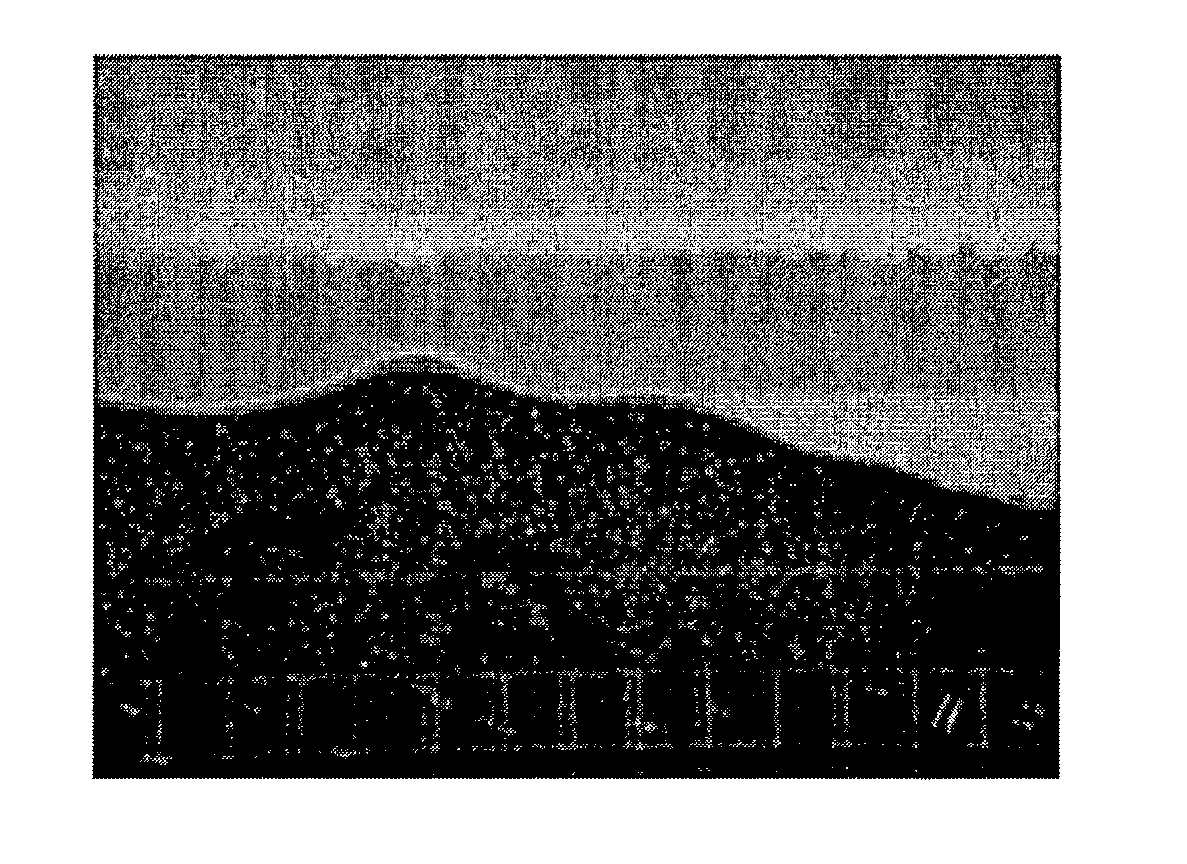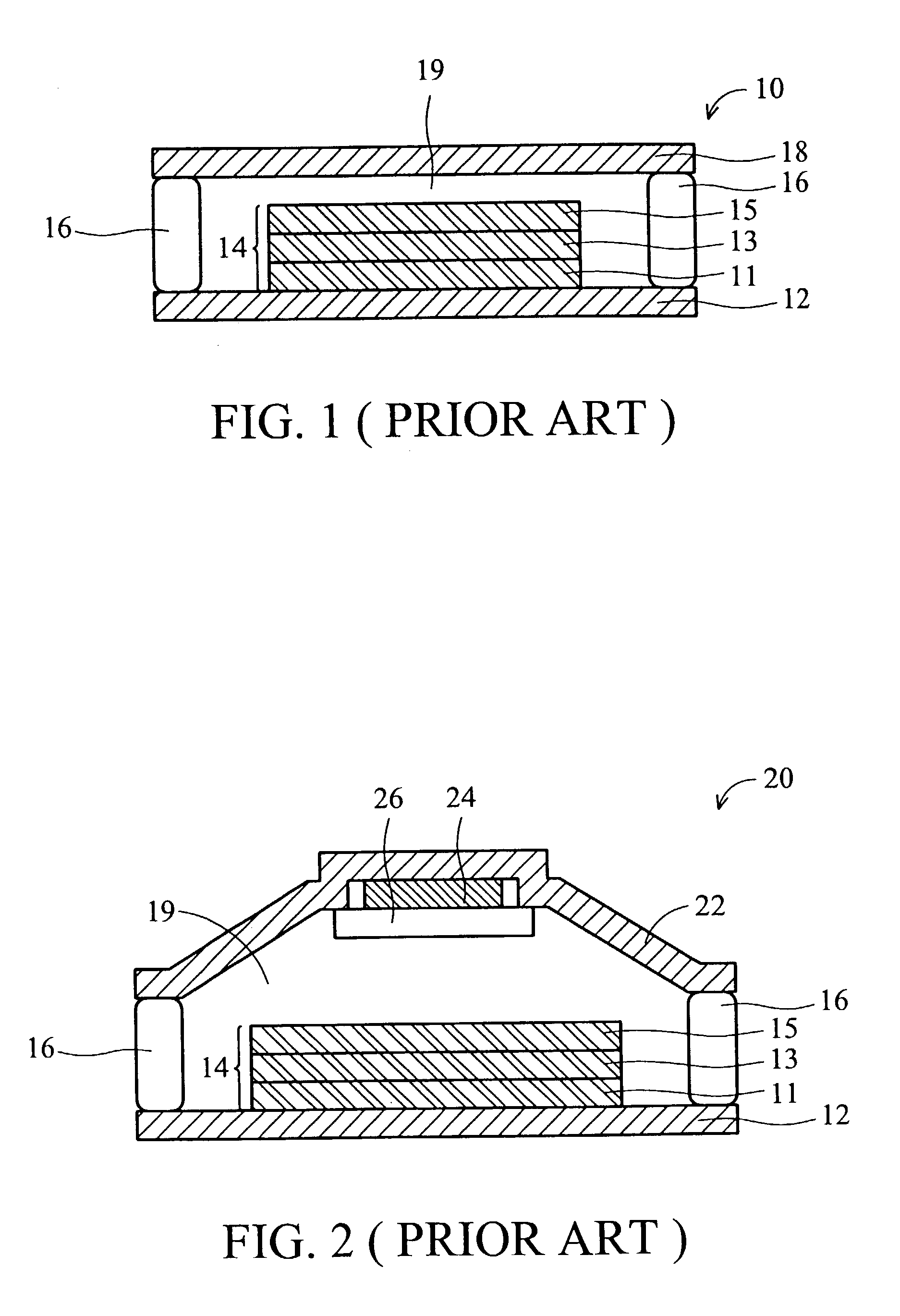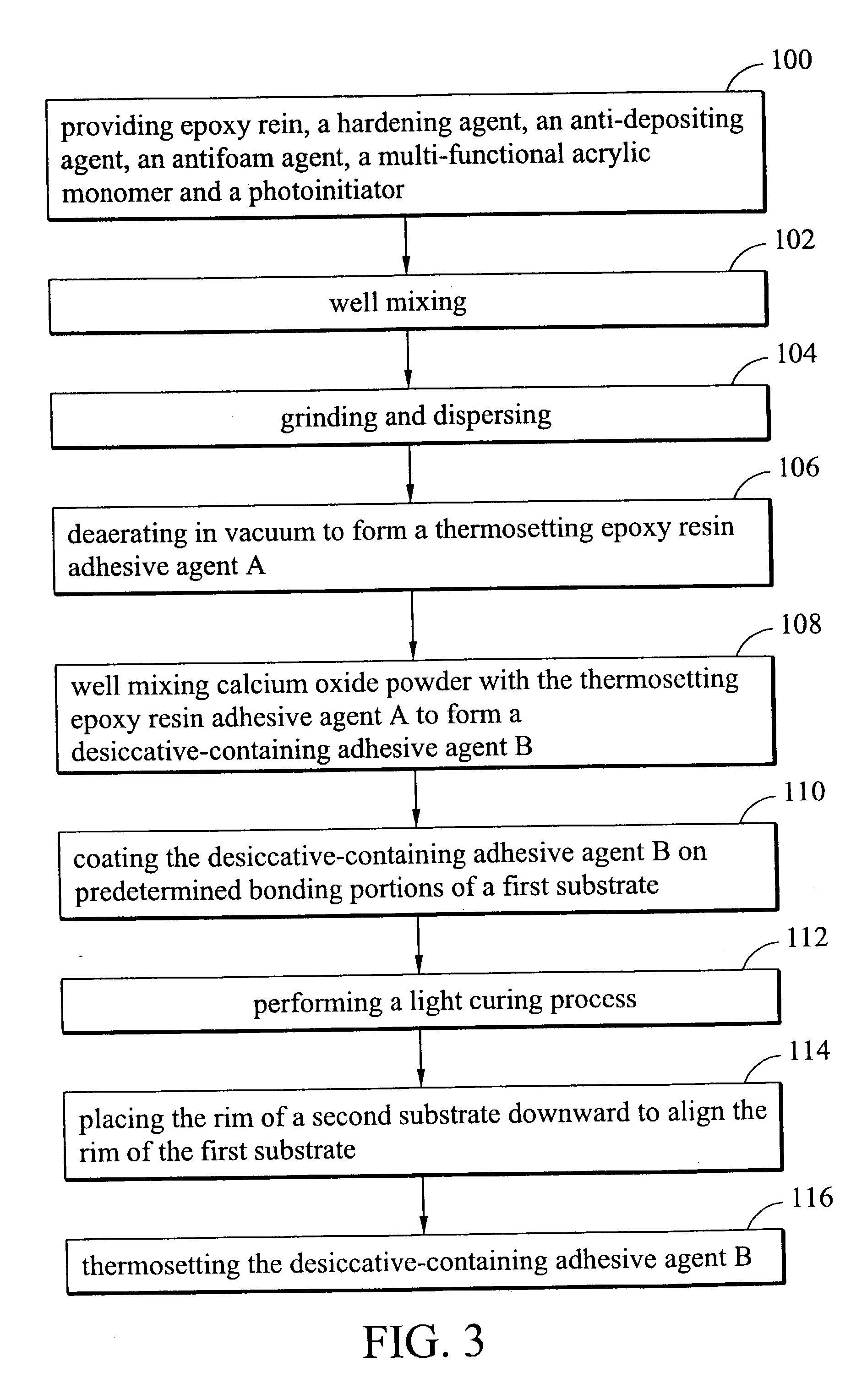Packaging material used for a display device and method of forming thereof
a technology of packaging material and display device, which is applied in the direction of identification means, instruments, non-macromolecular adhesive additives, etc., can solve the problems of oxidation of electrodes, cracking of organic materials, and insufficient bonding strength between
- Summary
- Abstract
- Description
- Claims
- Application Information
AI Technical Summary
Benefits of technology
Problems solved by technology
Method used
Image
Examples
first embodiment
[0025] First Embodiment
[0026] FIG. 3 is a flowchart of a method of forming the packaging material according to the first embodiment of the present invention.
[0027] First, at step 100, a bisphenol A glycidyl ether-based epoxy resin of 100 g in weight, a hardening agent of amine of 110 g in weight, an anti-depositing agent of melted silica of 0.1.about.5 g in weight, a silicon-based antifoam agent of 0.01.about.1 g in weight, a multi-functional acrylic monomer of 3.about.5 g in weight, and a photoinitiator of 0.11 g in weight are provided.
[0028] For example, the epoxy resin of 100 g in weight is model DER331 produced by Dow Chemical Co. in America, the hardening agent of 25 g in weight is model PN23 produced by Ajinomoto fine-techno Co. Inc. in Japan, the anti-depositing agent of 1 g in weight is model Aerosil 380 produced by Degussa-Huis Co. in Germany, the antifoam agent of 0.5 g in weight is model Airex 900 produced by Tego Co. in Germany, the multi-functional acrylic monomer of 5 ...
second embodiment
[0031] Second Embodiment
[0032] FIG. 4 is a flowchart of a method of forming the packaging material according to the first embodiment of the present invention.
[0033] First, at step 200, bisphenol F glycidyl ether based epoxy resin of 100 g in weight, polypropylene oxide based polyols of 0.about.50 g in weight, a light-hardening photoinitiator of 0.1.about.10 g in weight generated by triphenyl sulfide and phosphorus hexafluoride, a silicon-based antifoam agent of 0.01.about.1 g in weight, a multi-functional acrylic monomer of 3.about.5 g in weight, and a photoinitiator of 0.1.about.1 g in weight are provided.
[0034] For example, the epoxy resin of 100 g in weight is model EPON862 produced by Resolution Performance Products LLC. in America, polyols of 5 g in weight is model 1048 produced by Lyondell Chemical Co. in Taiwan, the light-hardening photoinitiator of 4 g in weight is model SP150 produced by ASAHI DENKA Co. Ltd in Japan, the antifoam agent of 0.5 g in weight is model Airex 900 ...
PUM
| Property | Measurement | Unit |
|---|---|---|
| thickness | aaaaa | aaaaa |
| diameter | aaaaa | aaaaa |
| RH | aaaaa | aaaaa |
Abstract
Description
Claims
Application Information
 Login to View More
Login to View More - R&D
- Intellectual Property
- Life Sciences
- Materials
- Tech Scout
- Unparalleled Data Quality
- Higher Quality Content
- 60% Fewer Hallucinations
Browse by: Latest US Patents, China's latest patents, Technical Efficacy Thesaurus, Application Domain, Technology Topic, Popular Technical Reports.
© 2025 PatSnap. All rights reserved.Legal|Privacy policy|Modern Slavery Act Transparency Statement|Sitemap|About US| Contact US: help@patsnap.com



